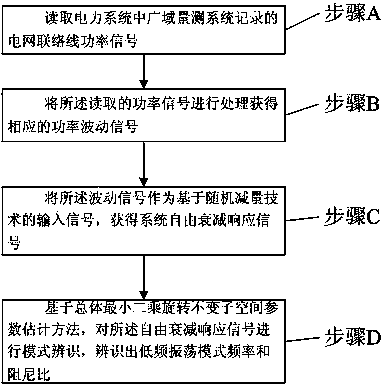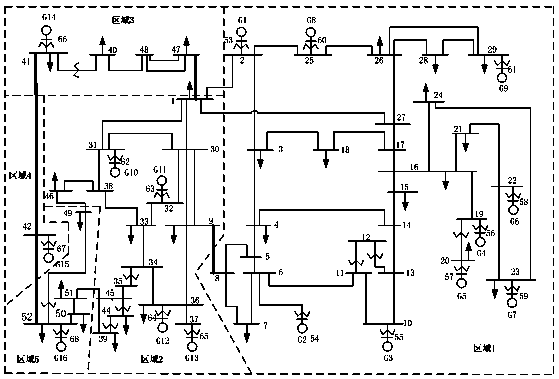Electric system low-frequency oscillation mode parameter identification method
A low-frequency oscillation and power system technology, applied in the direction of reducing/preventing power oscillation, etc., can solve the problems of weak anti-noise and poor identification accuracy, and achieve the effect of strong anti-noise and high identification accuracy
- Summary
- Abstract
- Description
- Claims
- Application Information
AI Technical Summary
Problems solved by technology
Method used
Image
Examples
Embodiment 1
[0050] In Embodiment 1, a method for identifying parameters of a power system low-frequency oscillation mode is provided. Please refer to Figure 1-Figure 2 , the method includes:
[0051] Step A: Read the grid tie line power signal recorded by the wide area measurement system in the power system;
[0052] Step B: Process the read power signal to obtain a corresponding power fluctuation signal;
[0053] Step C: using the fluctuating signal as an input signal based on a random decrement technique to obtain a system free attenuation response signal;
[0054] Step D: Based on the overall least squares rotation invariant subspace parameter estimation method, perform mode identification on the free decay response signal, and identify the low frequency oscillation mode frequency and damping ratio.
[0055] Wherein, in the embodiment of the present application, the processing of the read power signal to obtain the corresponding power fluctuation signal is specifically:
[0056] Th...
PUM
 Login to View More
Login to View More Abstract
Description
Claims
Application Information
 Login to View More
Login to View More - R&D
- Intellectual Property
- Life Sciences
- Materials
- Tech Scout
- Unparalleled Data Quality
- Higher Quality Content
- 60% Fewer Hallucinations
Browse by: Latest US Patents, China's latest patents, Technical Efficacy Thesaurus, Application Domain, Technology Topic, Popular Technical Reports.
© 2025 PatSnap. All rights reserved.Legal|Privacy policy|Modern Slavery Act Transparency Statement|Sitemap|About US| Contact US: help@patsnap.com



